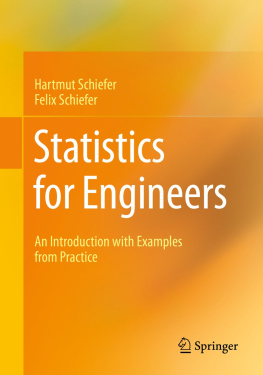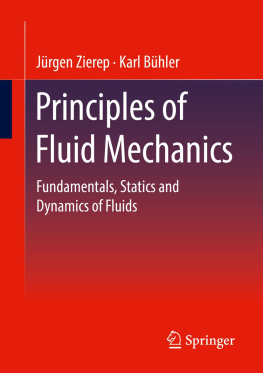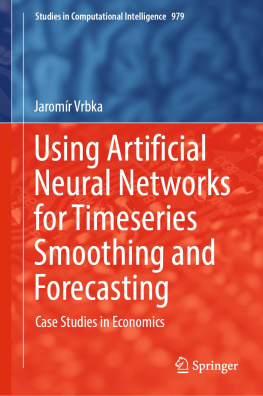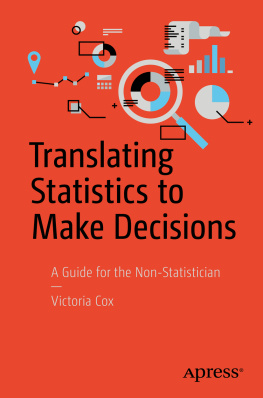Hartmut Schiefer
Mnchweiler, Germany
Felix Schiefer
Stuttgart, Germany
ISBN 978-3-658-32396-7 e-ISBN 978-3-658-32397-4
https://doi.org/10.1007/978-3-658-32397-4
The translation was done with the help of artificial intelligence (machine translation by the service DeepL.com). A subsequent human revision was done primarily in terms of content.
Springer Fachmedien Wiesbaden GmbH, part of Springer Nature 2021
This work is subject to copyright. All rights are reserved by the Publisher, whether the whole or part of the material is concerned, specifically the rights of translation, reprinting, reuse of illustrations, recitation, broadcasting, reproduction on microfilms or in any other physical way, and transmission or information storage and retrieval, electronic adaptation, computer software, or by similar or dissimilar methodology now known or hereafter developed.
The use of general descriptive names, registered names, trademarks, service marks, etc. in this publication does not imply, even in the absence of a specific statement, that such names are exempt from the relevant protective laws and regulations and therefore free for general use.
The publisher, the authors and the editors are safe to assume that the advice and information in this book are believed to be true and accurate at the date of publication. Neither the publisher nor the authors or the editors give a warranty, expressed or implied, with respect to the material contained herein or for any errors or omissions that may have been made. The publisher remains neutral with regard to jurisdictional claims in published maps and institutional affiliations.
This Springer imprint is published by the registered company Springer Fachmedien Wiesbaden GmbH part of Springer Nature.
The registered company address is: Abraham-Lincoln-Str. 46, 65189 Wiesbaden, Germany
Foreword
Engineers use statistical methods in many ways for their work. The economic, scientific, and technical requirements of this approach mean that it is necessary to obtain better knowledge of technical systems, such as their causeeffect relationship, a more precise collection and description of data from experiments and observations, and also of the management of technical processes.
We are engineers. For us, mathematics and thus also statistics are tools of the trade. We use mathematical methods in many ways, and engineers have made impressive contributions to solving mathematical problems. Examples that spring to mind include the solution of Fouriers differential equation through numerical discretization by L. Binder (1910) and E. Schmidt (1924), or the elastostatic-element method (ESEM, later called FEM) developed by A. Zimmer in the 1950s, and K. Zuse, whose freely programmable binary calculator (the Z1, 1937) earned him a place among the forefathers of modern computing technology.
The present explanations serve as an introduction to the statistical methods used in engineering, where engineers are under constant pressure to save time, money, and materials. However, they can only do this if their knowledge of the sequence ranging from design through to production and the application of the product is as comprehensive as possible. The application of statistics is an important aid to establish such knowledge of interrelationships.
Technical development is accompanied by an unprecedented increase in data volumes. This can be seen in all fields, from medicine through to engineering and the natural sciences. Evaluating this wealth of data for a deeper penetration of cause and effect represents both a challenge and an opportunity. The phenomenological description of the relationship between cause and effect enables further theoretical investigationfrom the phenomenological model to the physical and technical description.
The aim of this textbook is to contribute to the wider application of statistical methods. Applying statistical methods makes statistically founded statements available, reduces the expenditure associated with experiments, and ensures that experiment results are evaluated completely, meaning that more statistically sound information is gained from the statistically planned experiments or from observations. All in all, the application of statistical methods can lead to more effective and efficient development, more cost-effective production with greater process stability, and faster identification of the causes of damage.
The contents of statistical methods presented here in seven chapters are intended to facilitate access to the extensive and comprehensive literature that exists in print and online. Examples are used to demonstrate the application of these methods.
We hope that the contents of this book will help to bridge the gap between statisticians and engineers.
Please also use the opportunities for calculation available online. We are grateful for any suggestions on how to improve the books contents and for notification of any errors.
We thank Mr. Thomas Zipsner from Springer Vieweg for his constructive cooperation.
To satisfy our requirements for the English version of Statistics for Engineers, we would like to thank Mr. James Fixter for his professional cooperation in editing the target text.
Hartmut Schiefer
Felix Schiefer
Mnchweiler, Germany Stuttgart, Germany
2018 (English edition 2021)
List of Abbreviations
BCoefficient of determination (r2 = B)
cNumber of defective parts
cm
Machine controllability
cmk
Machine capability
cp
Process capability index
cpk
Process capability index, minimum
DAverage outgoing quality
eResiduum (remainder)
FCoefficient according to Fisher (F-distribution, F-test)
fDegree of freedom
fxConfidence region for measured values
fxiMeasure of dispersion for measured values
Gym
Error margin, absolute maximum
Gys
Error margin, absolute statistical
HjTheoretical frequency
hjEmpirical frequency, relative frequency
H0
Null hypothesis
H1
Alternative hypothesis
KRange coefficient
kNumber of classes
L(
p)
Operating characteristic curve
NNumber of values in the basic population
nNumber of samples, number of measured values
nxNumber of specific events
PBasic probability
pMean probability, probability of acceptance
QBasic converse probability
RRange
rCorrelation coefficient
SConfidence level
sStandard deviation, dispersion of random sample
s 














